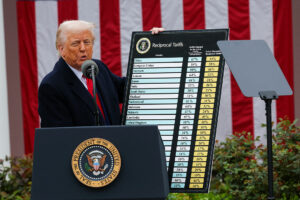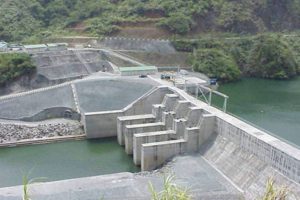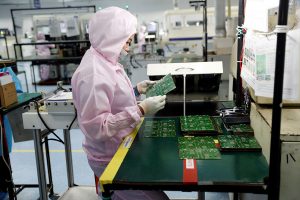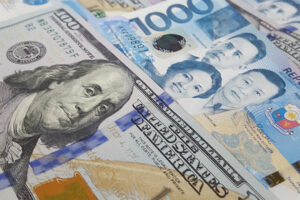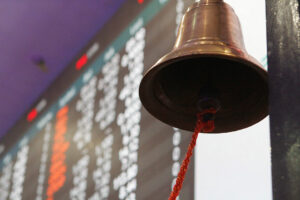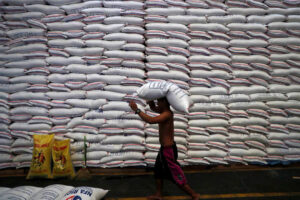The Presidential palace on Thursday raised alarm over the US decision to increase tariffs on Philippine exports to 20%, as a high-level delegation prepares to fly to Washington next week to seek adjustments.
The Philippine Exporters Confederation, Inc. (Philexport) also expressed concern about the country’s shrinking trade leverage with the US after US President Donald J. Trump’s move to hike tariffs from the “Liberation Day” rate of 17%.
“We are concerned that, notwithstanding our efforts and constant engagements, the US still decided to impose a 20% tariff on Philippine exports,” the Trade department said in a separate statement.
Still, Frederick D. Go, special assistant to the President for investment and economic affairs, said the new tariff remains the “second lowest” among Association of Southeast Asian Nations (ASEAN) member states, next to Singapore’s 10%.
Mr. Trump first announced the sweeping tariff changes on April 2 — dubbed “Liberation Day” — and implemented a 90-day pause that ended on July 9.
The US President said in posts on his Truth Social media platform that starting Aug. 1, he would impose a 20% tariff on goods from the Philippines, 30% on goods from Sri Lanka, Algeria, Iraq, and Libya, and 25% on Brunei and Moldova.
Mr. Go said the Philippine government is pursuing further negotiations.
“We remain committed to continuing negotiations with the United States in good faith to pursue a bilateral comprehensive economic agreement or, if possible, a free trade agreement,” he told a news briefing.
The delegation — composed of Mr. Go, Trade Secretary Ma. Cristina A. Roque, Trade Undersecretary Ceferino S. Rodolfo and Trade Undersecretary Allan B. Gepty — is scheduled to visit Washington from July 14 to 18.
“The economic team and the Department of Trade and Industry will continue to advance key economic reforms to sustain a competitive and investor-friendly business environment,” Mr. Go said, citing the need to build more global trade ties.
Philippine Ambassador to the US Jose Manuel “Babe” G. Romualdez said the Philippines would seek to lower the duty, which remains among the lowest reciprocal duties in Southeast Asia.
“We are still planning to negotiate that down,” he said in a text message.
‘Unilateral impositions’
The Philippine Trade department said it understands the US concerns about trade imbalances and its push to boost local manufacturing.
“However, global supply chains are deeply interconnected, and unilateral trade impositions will have adverse effects on the global economy,” it said. “Thus, we believe in the need for constructive engagement to address trade issues.”
US goods trade with the Philippines reached about USD 23.5 billion last year, according to data from the Office of the United States Trade Representative. US exports to the Philippines stood at USD 9.3 billion, a 0.4% increase from 2023, while imports from the Philippines hit USD 14.2 billion, up 6.9% year in year.
The resulting US goods trade deficit with the Philippines widened to USD 4.9 billion in 2024, a 21.8% increase from a year earlier.
Finance Secretary Ralph G. Recto, for his part, said the Philippines does not plan to retaliate. “Trade negotiations are ongoing. [There are] no plans to increase tariffs on US imports,” he told BusinessWorld in a text message.
Despite the higher levies, Mr. Recto said the economy is still expected to grow by 5.5% to 6.5% this year.
Philexport President Sergio Ortiz-Luis, Jr. described the US tariff hike as “very unfortunate.”
“We do not mind the increase from 17%, except the fact that some of our major competitors have their tariffs decreased, especially Vietnam, which is at the same level with us,” he told BusinessWorld by telephone.
The group expressed concern that the Philippines might no longer be able to offer trade concessions without hurting local industries.
Mr. Ortiz-Luis noted that other countries currently negotiating with the US enjoy more bargaining power.
“Unfortunately, they can negotiate because they have leverage that we do not have because we have given them up already,” he said. “We have given the US [military] bases, they are putting ammunition here, we are buying used equipment from them, but the others are not.”
Mr. Ortiz-Luis urged the government to take the export sector and micro, small, and medium enterprises (MSME) more seriously, warning that the US tariff could still change before Aug. 1.
“It has so far been just lip service in terms of product development, joining international trade, and marketing,” he said. “No funding that matters is coming from the government.”
“Those are the things that are being forgotten… These are investments that we cannot afford to miss,” he added.
He also said any future talks with the US should highlight the country’s limited export volume.
“We cannot offer anything anymore. I cannot think of anything we can offer on the trade side, except things that will probably affect our agricultural imports from the US,” Mr. Ortiz-Luis said.
Instead of focusing solely on the tariff hike imposed by the US, the government should direct its efforts toward export product development and market diversification, he said.
Despite the 20% tariff, he remains optimistic that the country could still meet its revised export goal.
“We have already abandoned the Export Development Council’s target. What we are using now is the PDP target, and I think we can still achieve that,” Mr. Ortiz-Luis said, referring to the USD 113.42-billion export target under the Philippine Development Plan (PDP).
Foreign Buyers Association of the Philippines (FOBAP) President Robert M. Young said Manila should negotiate with Washington for a 10% tariff.
“Second is the oft-repeated call for the drastic improvement to level up our production capabilities and ease in doing business in order to compete and still remain on the radar of US buyers,” he said by telephone.
The 20% tariff could lead to weaker exports, slower economic growth, employment risks and investment uncertainty, Jonathan L. Ravelas, senior adviser at Reyes Tacandong & Co., said in a Viber message.
“Consider diversifying export markets, exploring US-based manufacturing partnerships, and leveraging ASEAN trade networks,” Mr. Ravelas said.
He also called for an acceleration in free trade agreement talks to cushion the economic impact of the tariff hike.
Semiconductor and Electronics Industries in the Philippines Foundation, Inc. (SEIPI) President Danilo C. Lachica said further clarification is needed on the nature of the higher US tariff.
“There is still a need to clarify if the 20% is reciprocal or the total tariff,” he said.
‘Wake up call’
The Philippine Chamber of Commerce and Industry (PCCI) said the 20% tariff could hurt local industries.
“This development underscores the importance of diversifying our export markets, strengthening regional trade partnerships and investing in domestic competitiveness,” PCCI President Enunina V. Mangio said in a Viber message.
She urged the government to boost its support for local industries amid mounting global trade pressures.
Ser Percival K. Peña-Reyes, director at the Ateneo Center for Economic Research and Development, said the 20% duty is “still relatively lower” than most Philippine neighbors “so there’s still the potential to attract businesses from elsewhere.”
But investors won’t come in unless the Philippines boosts competitiveness, he said in a Viber message. He said tax holidays, reduced corporate income taxes, duty-free importation of equipment and raw materials and subsidized infrastructure could draw in investments.
Meanwhile, former Tariff Commissioner George N. Manzano said the Philippines remains in a relatively better position than other export-driven economies due to the lower tariffs and the exemption of key products like semiconductors.
“It’s not really as problematic as other countries that export, like maybe Bangladesh — it exports a lot of garments, which are not exempted,” he said by telephone.
Trade Justice Pilipinas said the higher US tariffs should serve as a “wake-up call” not only for the Philippine government but also for the broader ASEAN.
“Today’s tariff hike is not just a trade issue; it exposes the deep flaws of an export-dependent development strategy that leaves our economy at the mercy of global markets and the political whims of foreign leaders,” it said in a statement.
The group urged the Philippines to use the moment as an opportunity to strengthen ties with regional neighbors.
The recent announcement should compel the Philippines to rethink and deepen regional solidarity with ASEAN, it added. — Chloe Mari A. Hufana, Justine Irish D. Tabile and Aubrey Rose A. Inosante with Reuters






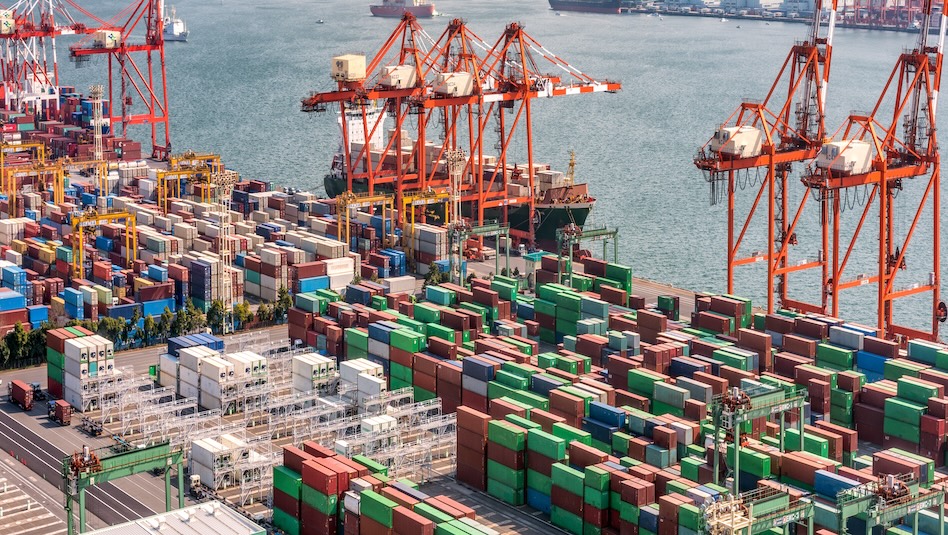
 DOWNLOAD
DOWNLOAD




